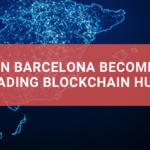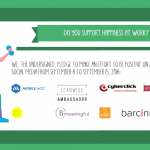“There’s no such thing as failure in intrapreneurship, just opportunities to pivot.” With this one-liner, speaker Neil Fogarty kicked off and set the tone of the Intrapreneurship Conference in Barcelona. Over the course of two days, attendees from all over the world focused on asking the right questions and continued the conversation to help ‘trouble makers’ accelerate innovation in their organization. Various support mechanisms such as bootcamps, funding, mentoring and tools were shared.
An intrapreneur refers to an employee that pursues ideas and develops entrepreneurial skills to develop innovative projects inside a company. An intrapreneur works on emerging business opportunities and goes where no one has gone before to create the next generation of breakthroughs in their company. It requires a certain DNA and strong antibodies to cope with risk averseness and challenging the status quo. Resistance and resilience. Therefore, the intrapreneur is often seen as a troublemaker, building the Trojan Horse and only being rewarded when the central square is reached. To conquer innovation, transformation and champions are needed. This requires push, explore and adapt. It is not only a playfield, but a battlefield, which can be fast and brutal.
Naturally, a lot of attention went to how to create the right culture and who could help. Make the intrapreneur aware that he/she is not alone. Intrapreneurs can be best friends with entrepreneurs. If you are a troublemaker, you need friends: a network to learn and to help. A sponsor internally is key, but you can also find assistance and reflection on what you are doing outside the company. Therefore, several mentorship programs and the League of Intrapreneurship were present to tell their story. They emphasize the value of shared experience and the stories of those that walked the walk.
But first, back to basic. The right questions to be very aware of the environment and understand it. Understanding and listening to needs, benefits and the feasibility of offering a solution. The driving principle of the intrapreneur is continuously being curious: Why? Why? Why? Afterwards, it is time for some more in-depth reflection questions:
- What is it that gets the other person interested in my idea?
- Are you bending a rule? What is the change? What if…?
- What do you want to see in a product? Why and how is it offering an added value?
- What keeps your energy up? Why do you believe in it?
Mind that questions should not be a one way approach. Conversations are needed to really define the problem, generate engagement and be clear on the benefit. A lot can be won by how the situation is framed and looking past the product (understand what is behind the product, the added value) . For example: framing car manufacturing into business of mobility. Framing a book into opening a new world of experience and access to knowledge.
A nice example on bending the rule was given by Noam Wekser by using the innovation templates from Goldenberg and Mazursky , e.g. on attribute dependency. This tool challenges with the set internal and external variables of a product by thinking of other benefits and to see if there already exists a dependency. If not? This might just be your new business line.

Secondly, the approach of intrapreneurship is tightly linked to culture and behavior. Intrapreneurship is an organizational investment. It is a people’s business. This resulted in a lot of comments with regards to the role of HR. The common notion was: it’s time to move away from human resources to human assets. An effort should be made to recognize the added value of intrapreneurs and foster them. Important in this is to help the intrapreneur gain insight in its behavior, behavior of the team, behavior of the company and lastly the outside world.
So, what is your behavior? Or, in other words, what is your color? There are plenty of tools to ‘box’ people and define the assets they are best in, but also to be aware how you can approach someone best: whether it is with a birdseye view, a visualization or data. At the conference we tried this one, try it and see if it works for you. It’s just one of the tools that might be used. But take advantage of the available and enabling technology that is out there to enhance human asset insight and customer intelligence.
Now you know your color. Which behaviors are needed? According to Rob de Graaf (Philips), the 3 needed behaviors to make intrapreneurship successful are 1) take ownership, 2) resource to win and 3) team up to excel. I would like to add, be inspirational. Having a vision and being able to inspire others along is a huge asset. Especially, since you are an intrapreneur, which means having the big advantage of instant access to a large pool of internal people (your colleagues) to test, mobilize and make them a sponsor. But even more important, is having the right mindset. Many speakers referred to the following phrase: “An intrapreneur asks for forgiveness and not for permission.” Juan-Jose Juan (Vodafone) even added: “For an intrapreneur frustration is your breakfast.” Lastly, know when to stop. Or pivot. Important is to be able to assess the viability and constantly be clear: are we on the right track or did the track change along the way? It’s hard, but don’t be afraid to kill your darlings.
To conclude, intrapreneurship is about mobilization and human assets. Do you mobilize your environment?
Click to see the storify or the slides of the conference.
Have a look at the complete infographic on intrapreneurship
Image credits: The League of Intrapreneurs, Intrapreneurship conference







Leave a Reply